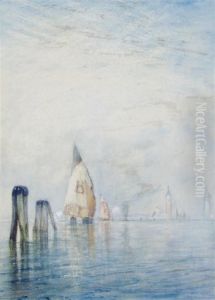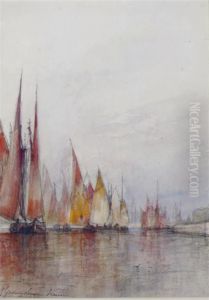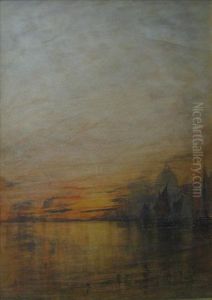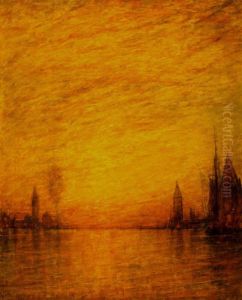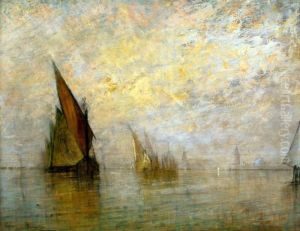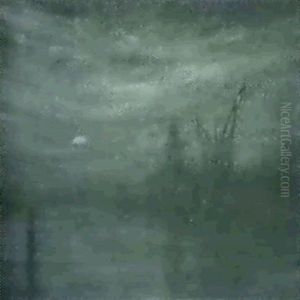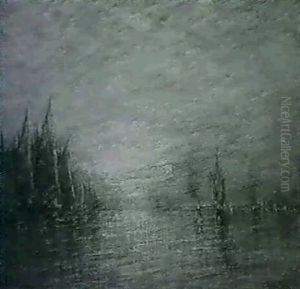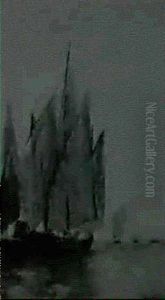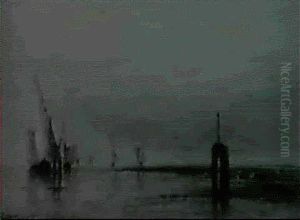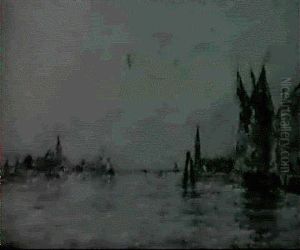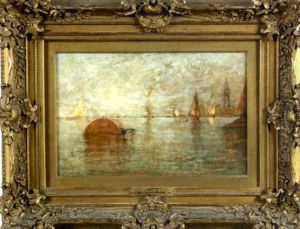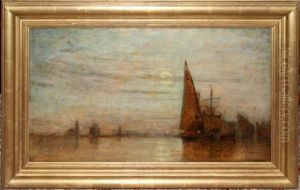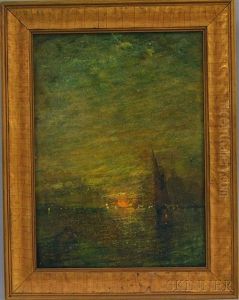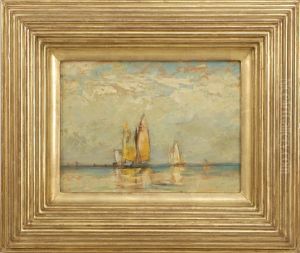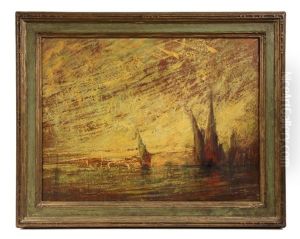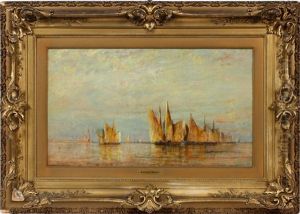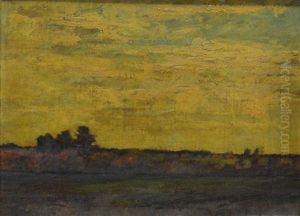William Gedney Bunce Paintings
William Gedney Bunce was an American painter known for his atmospheric landscapes and marine scenes. Born on September 15, 1840, in Hartford, Connecticut, Bunce developed an early interest in art and pursued his formal education at the prestigious National Academy of Design in New York. His artistic journey was deeply influenced by the 19th-century American and European art movements, including the Hudson River School and Impressionism.
Bunce's early work reflected the detailed, romanticized landscape style common to the Hudson River School, but as his career progressed, he became more interested in capturing the ephemeral qualities of light and atmosphere, a shift that aligned with the burgeoning Impressionist movement. In the 1860s, he traveled to Europe, where he was particularly impressed by the work of the Barbizon School in France, which emphasized more intimate, tonal landscapes that captured mood rather than detailed, grand vistas.
During his time in Europe, Bunce became acquainted with members of the artistic avant-garde and was particularly influenced by the work of the Impressionist painters, who were just beginning to challenge the conventions of the art world with their loose brushwork and interest in capturing the effects of light. He spent much of his time in Venice, where the unique interplay of light and water continued to inspire his evolving style. The Venetian seascapes and vistas became a central theme in his work, and he would often depict the serene waters, boats, and architecture of Venice in a style characterized by a more muted palette and an emphasis on light and reflection.
After returning to the United States, Bunce settled in his hometown of Hartford and became an integral part of the local art scene. He continued to paint and exhibit his work, which was well received for its poetic and atmospheric qualities. Bunce's paintings during this period conveyed a sense of tranquility and were marked by a subtle, harmonious use of color. He was a member of various art organizations, including the National Academy of Design, where he was elected as an associate in 1880 and became a full Academician in 1885.
William Gedney Bunce's contribution to American art lies in his synthesis of European influences and the American landscape tradition, which helped pave the way for American Impressionism. He continued to paint until his death on June 6, 1916, leaving behind a legacy of work that captures the essence of the environments he loved, from the New England coast to the canals of Venice.
